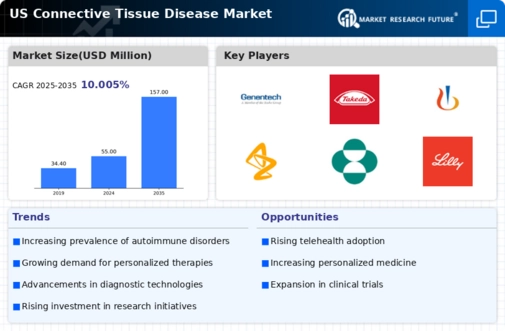The US Connective Tissue Disease Market is a dynamic sector driven by increasing prevalence of conditions such as lupus, rheumatoid arthritis, and scleroderma. It is characterized by intense competition among pharmaceutical companies striving to establish dominance through innovative therapies and targeted treatments. The market is shaped by evolving patient needs, regulatory changes, and advancements in biotechnology that lead to new avenues for treatment. As a result, companies are not only investing in research and development to bring forth novel therapies but also collaborating with healthcare providers to improve patient outcomes.
The competitive landscape is marked by a need for strategic positioning, effective marketing, and a deep understanding of competitive intelligence to navigate the complexities of this market.
Genentech has carved a significant niche within the US Connective Tissue Disease Market, demonstrating strong capabilities in research and development, particularly in biologics and targeted therapies. The company leverages its robust pipeline to address various autoimmune conditions, which bolsters its competitive stance. Genentech’s established presence in the market is complemented by its ongoing clinical trials and collaborations with healthcare professionals, allowing for the continuous enhancement of treatment protocols.
Furthermore, the company’s commitment to patient-centric approaches and its reputation for innovation position it as a trusted leader among competitors, facilitating its ability to meet the evolving demands of healthcare providers and patients alike in the management of connective tissue diseases.
Takeda has a noticeable footprint in the US Connective Tissue Disease Market, focusing on the development of therapies that address diseases like systemic lupus erythematosus and other autoimmune conditions. Their diverse portfolio includes several key products that aim to mitigate symptoms and improve the quality of life for affected individuals. Takeda's strengths lie in its strong research capabilities, which are augmented through strategic collaborations and partnerships aimed at pioneering new treatments. Recent mergers and acquisitions have further strengthened its position, allowing Takeda to expand its reach and improve its offerings in the market.
The company's emphasis on innovation and patient engagement aligns well with current healthcare trends, enabling it to remain competitive amidst a rapidly evolving landscape in the US connective tissue disease sector.
























